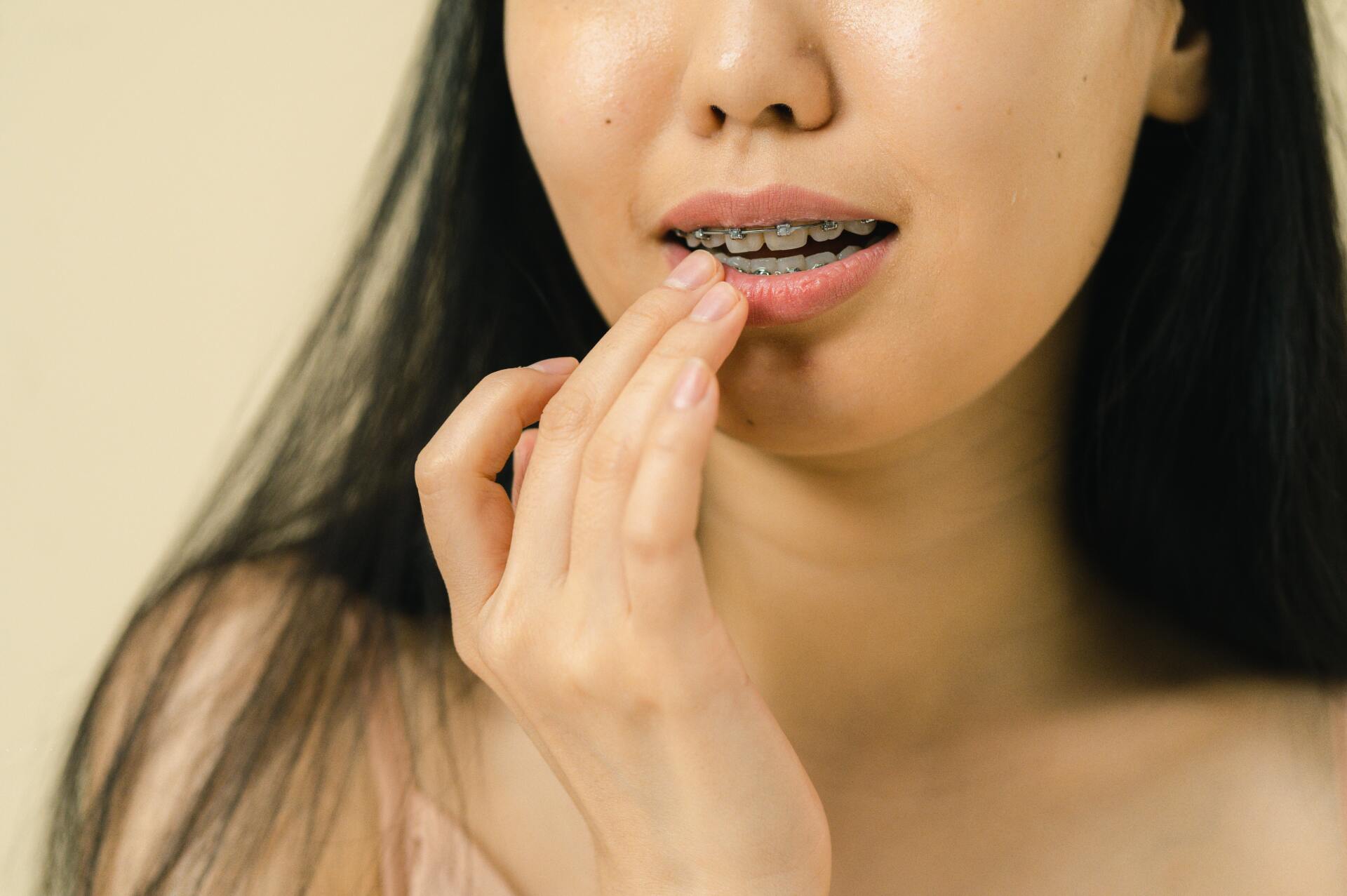
Getting braces is very common in childhood, but that doesn’t mean it isn’t scary for some kids. This is especially true for young children who might be getting phase one treatment early on. If your child is nervous about getting their braces on, reassure them that the process is painless and will be over before they know it! Talk Them Through It There is ample research to suggest that people are far better able to endure medical procedures when they are well-informed about the process. Your child will be more confident going into their appointment if they know what to expect. You can read about the process online to become informed yourself. However, the basics include sitting in a special chair, getting their teeth cleaned and dried, and then having the braces put on: brackets first, then the anchor bands, and finally the archwires. It won’t hurt, but they might feel tightness and pressure as the appliance is fitted. Let Them Help You Pick Out Soft Foods to Eat Your child will most likely feel some soreness in the days following getting their braces on. Until they acclimate to the braces they will probably also have a harder time chewing their food and talking normally. Reassure them that these symptoms will only last a short time. In the meantime, it helps to have some of your child’s favorite soft foods on hand. They will be even more excited if they can help you pick them out. Think ice cream, pudding, jello, macaroni and cheese, and mashed potatoes. Offer an Incentive What parent would make it through life without using a little bit of bribery now and then? Of course, we don’t ever call it bribery, we are simply offering our children incentives! And why not reward your child for going through with something that scares them? We all need some rewards now and then to boost morale and get us through the really tough times. Try to think of something that is both rewarding and health promoting such as a special date with you, a new toy to play with while they recover, or a fun game to take their mind off their sore mouth. Of course, the most important thing you can do to help your child before getting their braces on is to listen with compassion and cheer them on. Let them know that you believe in them! Your confidence is sure to rub off on them. If you have any questions about your orthodontic treatment or home care, click here to learn more from the experienced and caring staff at Pearl Orthodontics!
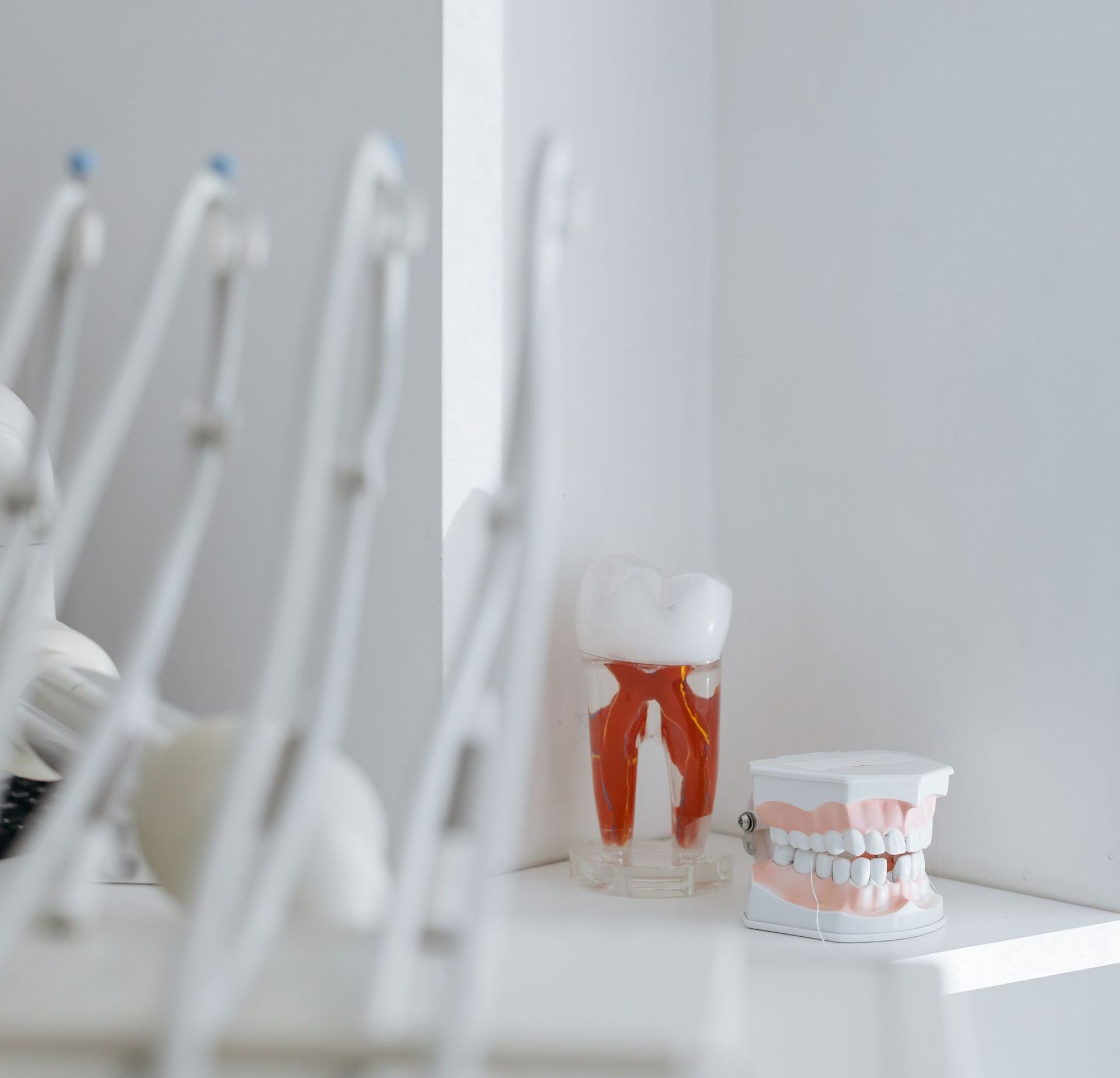
In the world of orthodontic care, everyone knows about braces and retainers. You have probably also heard of the Invisalign system of aligners. However, there are many more appliances that may need to be used in certain situations. Here are a few less-common appliances you may not have heard of. The Schwartz Appliance One reason for teeth crowding is that the mouth is too narrow to comfortably fit the full set of adult teeth as they grow in. There are several appliances that are made to correct this problem. One of these is the Schwartz Appliance. Before the palate is finished growing it can be expanded using this helpful device. The appliance is nestled into the hard palate that makes up the frontal roof of the mouth. The space is widened with a series of daily appliance adjustments that slowly open the palate to the necessary size. Once the bone hardens the palate into place, braces can be applied. The Forsus Appliance The Forsus Appliance is another tool used by orthodontists to properly position the bite. It is used similarly to rubber bands, but it cannot be removed by the patient. It can also correct more serious bite issues because it is composed of strong metal springs placed strategically on both sides of the mouth. Because the Forsus Appliance is such a powerful tool it can take the place of headgear in even severe cases of overjet. The Thumb Crib If your child is a thumb sucker they might end up needing the Thumb Crib. Thumb sucking is notorious for creating future orthodontic issues for children. Before these issues can be corrected, the thumb-sucking habit must be broken. Enter the Thumb Crib. The Thumb Crib is a simple metal appliance that is banded onto two upper molars and extends around the inside of the upper teeth and down from the hard palate to prevent thumb insertion. A few months in the Thumb Crib is generally all it takes to break the thumb-sucking habit for good. There are many other appliances that can be used in orthodontic treatment in addition to the three already mentioned. These devices may seem a bit frightening at first, but people generally adapt to them in a matter of days. The best news is that there is an appliance that can correct just about any orthodontic problem out there! Are you on the hunt for a caring, gentle orthodontist? Look no further than Pearl Orthodontics! Find out more by clicking here !

With over 4 million people wearing braces each year in the United States, orthodontic issues are common. And contrary to popular belief, these issues are not simply cosmetic problems. Bite problems, crowding, and abnormal tooth eruptions can lead to significant dental and well-being problems. That’s why it’s important to understand these common issues and know when treatment is necessary. Bite Problems In general, a bite problem is when the top and bottom teeth don’t align properly. This can interfere with the proper opening and closing of the jaw and cause undue wear and tear on certain teeth. They can also lead to TMJ pain, cause frequent headaches, and contribute to speech impediments. There are several different specific types of bite problems. These include the overbite, the underbite, the open bite, and the crossbite. Each of these types of bites will require specialized treatments to correct. If your upper teeth don’t naturally close just over your lower teeth and if your opposing molars don’t fit together when you close your mouth, you likely have a bite issue. Crowding Another common orthodontic problem occurs when the teeth don’t have enough room to erupt normally in the gums. This leads to crowding. Crowding can result from either having a small jaw or especially large teeth. Before crowded teeth can be repositioned, the root of the problem must be addressed either by expanding the palate, removing some teeth, or surgically creating the necessary space. Once space is made inside the mouth braces can position the teeth into their correct spots. Abnormal Eruption The ideal place for teeth to erupt is from the base of the gums. Here, teeth can perform their proper function, remain solidly anchored, and avoid causing damage to the inner lips and surrounding teeth. However, sometimes teeth become impacted. This blocks the tooth from erupting normally and the tooth instead begins to erupt from gums in the incorrect spot, such as the outside. Abnormal erupted teeth typically require a simple surgical procedure prior to getting braces. Orthodontic issues can lead to serious problems. These include speech impediments, jaw pain, headaches, improper wear and tear on the enamel, difficulty chewing, and reduced self-confidence. If you suspect you or a loved one might have bite problems, crowding, or abnormal tooth eruption, it might be time to visit the orthodontist. The sooner you address orthodontic issues the easier they are to fix. Braces are for people of all ages! Learn more about Pearl Orthodontist by clicking here !

Your beautiful, post-braces smile has been quite an investment! Not only did you go through all of the expenses of wearing braces, but you endured times of soreness, pain, and even let go of some of your favorite foods for a couple of years to get the smile you always dreamed of. Now, it is time to protect that investment and keep your beautiful smile gleaming for life. Here’s how! Wear Your Retainer The most important thing you can do to maintain your smile after braces is to wear your retainer. Religiously. Your teeth are stubborn and want nothing more than to return to their original positions. Your retainer is what keeps that from happening. Be sure to implicitly follow the instructions of your orthodontist. This will likely include wearing your retainer day and night for the first few months or even a year or more. Later, you will likely be able to reduce the time spent in your retainer to nights only, but wearing it as instructed is vital. Failing to do so could result in another bout with braces. Consider Teeth Whitening Treatment Sometimes, no matter how hard you try to prevent it from happening, your teeth come out of braces looking a bit mottled. This can be caused by several factors, from using whitening toothpaste during treatment to drinking too many staining beverages. If your teeth aren’t as white as you would like them to be, consider seeing your dentist for a whitening treatment. Teeth whitening can be done in-office in one brief visit. Continue Excellent Dental Hygiene Habits Hopefully, one thing that wearing braces has instilled is a lifelong habit of excellent dental hygiene. Now that you are used to brushing around those brackets and using a floss threader to floss, caring for your teeth without braces should be easier than ever! All you need to do now is maintain that same dedication toward your oral health moving forward. If you have been brushing after every meal, keep it up! And don’t stop flossing every single day. Finally, round out your superior dental hygiene with daily mouthwash rinses and biannual trips to the dentist. You’ve gone through all of the hard work of braces. Now, the last thing you want is for everything to be undone with poor hygiene habits and less-than-perfect retainer use. Instead, protect your investment by doing everything you can to ensure that your beautiful new smile lasts! Do you have questions about past or future orthodontic care? Click here to learn more!
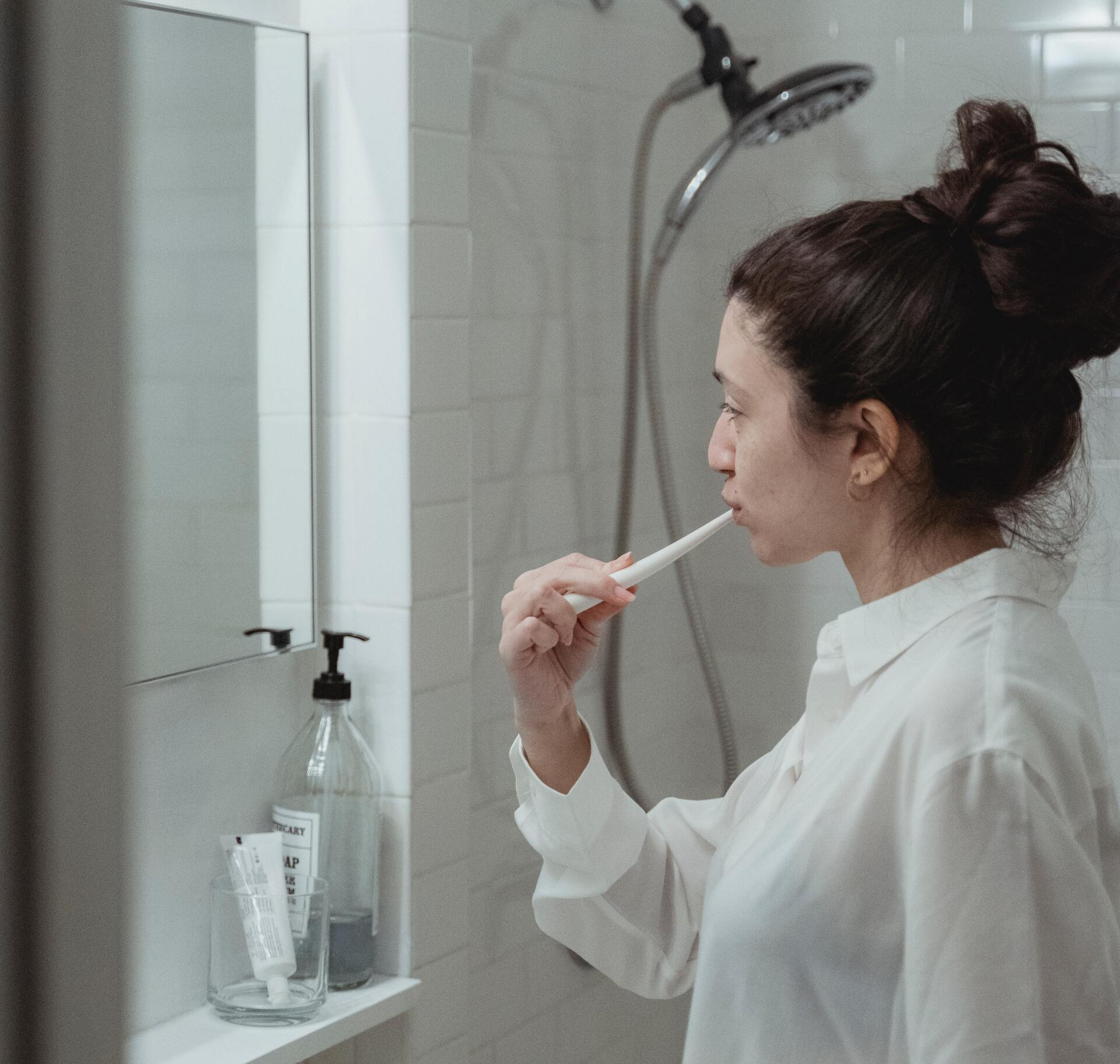
Everyone knows the most common reasons for getting braces: get straight teeth and a properly aligned bite. However, there are additional reasons for getting braces that you may not be aware of. Here are three lesser-known reasons you should get braces. Stop Sleep Apnea and Snoring Not all snoring or sleep apnea can be solved with orthodontic treatment, but it can help. In some people, snoring and even sleep apnea are caused because of an improperly aligned jaw. At times, this is significant enough to reduce airflow to the brain, causing you to wake frequently throughout the night. If a misaligned jaw is obstructing your airflow, braces may be part of the solution. Braces and other orthodontic appliances can expand your jaw and improve your respiration. This is important because snoring and sleep apnea leads to tiredness, fatigue, high blood pressure, and even stroke. Improved Dental Health Frequently, orthodontic issues can become dental issues as well. One example of this is over-crowded teeth. Food particles love to get stuck between overlapping teeth, leading to increased plaque buildup. Plaque then hardens into tartar, which eventually causes tooth decay and gum disease. Crooked, overlapping teeth are also much more difficult to brush and floss. Additionally, an improper bite can cause undo wear and tear on your enamel, breaking down the hard surfaces that protect the sensitive inner layers of your teeth. Braces correct these issues, helping you maintain better dental hygiene and improved oral health. Increased Confidence Your smile is the gateway into your soul. It is one of your most important features! Sadly, people with orthodontic issues often feel less confident in the way they look. They might even try to hide their smile–a true tragedy. You deserve to feel confident about the way you look. If your orthodontic issues are holding you back, don’t wait another moment. Set up a consultation with your orthodontist to start treatment as soon as possible. Everyone should love their smile! There are many reasons to get braces. In fact, you may not even realize that you need them. That’s why it’s so important to be evaluated by an orthodontist early and regularly. They will monitor your teeth and let you know when it’s time to begin treatment. Remember, early intervention is key. If you wait too long, the bones in your mouth will begin to harden and fix more rigidly in their current position. Do you think you might be ready for braces but aren’t sure? Pearl Orthodontics is here to help. Simply click here to learn how to get started today!

Congratulations! You are about to get braces and begin your journey toward the smile you have always wanted! These are exciting times, but you might also feel a bit nervous. One way to make braces a bit easier is to stock up on a few items that will help you on your journey. Here are some things that every braces wearer should keep on hand. Alternatives to Forbidden Foods If you have a food allergy or intolerance or know someone who does, then you already know how annoying it is to have to watch everyone indulging in your favorite foods while you just get to sit there and watch. Sadly, the same thing may happen with braces. Some foods are just too hard, crunchy, or sticky for the delicate wires and brackets of your braces to endure. The best way to combat the temptation and angst that comes with people around you munching on the things you can’t is to stock up on yummy alternatives. Popcorn (sans kernels) is a great alternative to nuts. Potato chips are better than corn chips. And, plain chocolate is a safe alternative to gummies, taffy, or toffee. Flossing Tool Brushing with braces is no problem. Flossing, however, is another story. And yet, your dental hygiene is even more important now than ever–which is really saying something because good hygiene is always essential. Luckily, there are a handful of flossing tools available to help you with that vital, daily habit. There are tools that range in complexity from simple floss threaders to high-tech waterpiks. Choose whatever works best for you and make sure to keep on flossing throughout your treatment! Pain Control While you will quickly adjust to your braces and forget you even have them on, there are bound to be some painful moments during your treatment. Your mouth will probably be sore for a few days after getting your braces. This also happens whenever you get a thicker archwire. Additionally, you might experience some canker sores thanks to protruding wires. You can combat these painful times with over-the-counter pain medication, hot and cold packs, orthodontic wax, and saltwater rinses. You will be surprised by how quickly life in braces becomes the new normal. Still, there are a few drawbacks. You can soften the blow of these drawbacks by stocking up on the items that will make your life in braces a little bit easier! Ready to start the process toward getting the smile of your dreams? Click here to set up your free consultation with Pearl Orthodontics!

You never got them as a teen, although you wish you had. Now, as an adult, you watch with envy as friends, coworkers, and relatives seem to be getting them like crazy. Even now you want them, but you just aren’t sure if it’s worth it. What are we talking about? Braces! The good news is that it’s never too late to get the smile you’ve always dreamed of. And yes, you are absolutely worth it! Close That Gap! Do you have a gap between your two front teeth that is all the rage with Vogue Magazine models but you can’t stand it? Why not get that thing closed? Gaps are a simple fix. If your teeth are straight and your bite is aligned in every other way, chances are your stint in braces will be lightning fast. If you don’t want to deal with the metal brackets and wires of braces, you would be an excellent candidate for Invisalign as well. With such an easy fix, why not just do it? Straighten Things Out! Some adults have always had crooked teeth. Others got their teeth knocked out of whack in a sports injury or other accident. Either way, crooked teeth can be a major pain. Food is constantly getting stuck in them and flossing can feel like World War 3. Plus, you have smiled with a closed mouth to hide those crooked teeth long enough! Get the smile you have always wanted with braces or Invisalign. Your hygienist will thank you! A Better Bite! Overbite, underbite, crossbite–they all, well, bite! These bite issues can lead to jaw pain, improper wear and tear on your enamel, difficulties forming certain sounds, struggles chewing, and improper facial structure. Your parents may not have thought that your bite issues were worth correcting, but you get to make that decision now. You can provide yourself with the care you deserve and fix that bite! How do you know when it is finally time to take the plunge and see your orthodontist? Well, watching in envy as the other adults in your life all perfect their smiles is a good indication that it’s time for you to do the same! You have worked hard and you deserve to spend a little bit of your hard-earned money on your own self-care. Ready to take the plunge and move toward the smile of your dreams? Click here to learn more about how Pearl Orthodontics can take care of your orthodontic needs at any age!
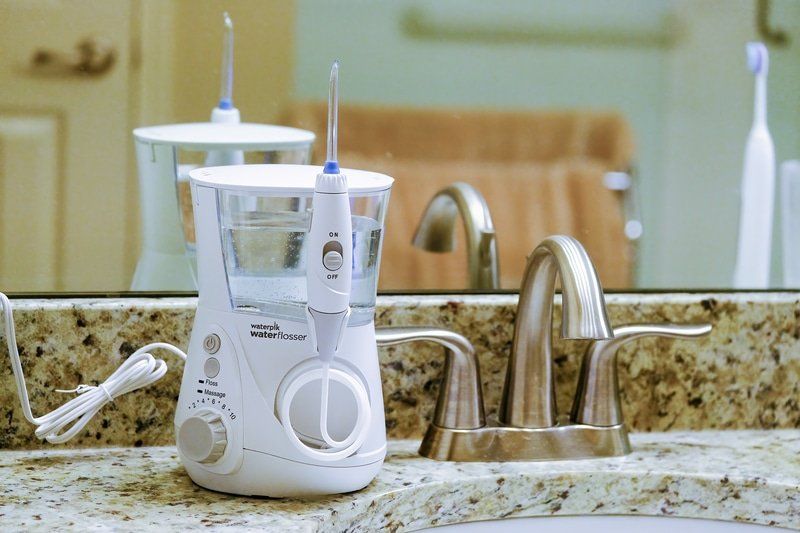
Your dental hygiene is always a vital part of your oral and overall health. Brushing at least two times a day, flossing daily, and visiting your dentist twice a year are generally seen as the gold standard of dental hygiene. Anything less than this can lead to tooth decay, gum disease, and other health issues. But, what about braces wearers? If it were possible, dental hygiene is even more important during this sensitive time. However, many people find flossing to be too much of a pain with braces and give up. Don’t let that happen to you! Instead, utilize one of the following tools to make flossing much easier. Floss Threader The most basic flossing tool available is a floss threader. Chances are your orthodontist set you up with a few of these when you began treatment. Floss threaders might seem cumbersome, but they are simple to master with just a little bit of dedicated practice. Simply thread your length of floss through the eye of the threader, insert the threader above the archwire, and gently pull it out, leaving the floss inside the archwire. The floss is now in the position to be used to floss. Repeat this process with each tooth. Orthodontic Flosser If you have used regular flosser picks, you can get a good idea of what an orthodontic flosser looks like. These flossers have small handles with a short line of floss securely attached to both ends of a U-shaped head. Orthodontic flossers narrow and flatten the head to fit underneath your archwire. This eliminates the need for the extra step a floss threader requires for a simple and effective flossing. Waterpik Waterpiks are a pricier flossing tool that can be especially useful for braces wearers. Waterpiks are electrical devices that shoot a very thin stream of water to clean the spaces between your teeth. Best of all, Waterpiks are even more effective than regular dental floss. Other than price, the only downside is that these tools can be a bit messy. It will take some getting used to in order to avoid getting water all over the place! Cleaning your teeth with braces can be a bit of a challenge but with the right tools, your dental hygiene shouldn’t skip a beat. Certainly, you should never let your flossing habit fall by the wayside just because it is a bit trickier. One of the above tools should help you to keep on flossing without any trouble. If you have any questions about your orthodontic needs, don’t hesitate to reach out to Pearl Orthodontics. For more home care and hygiene information, click here !
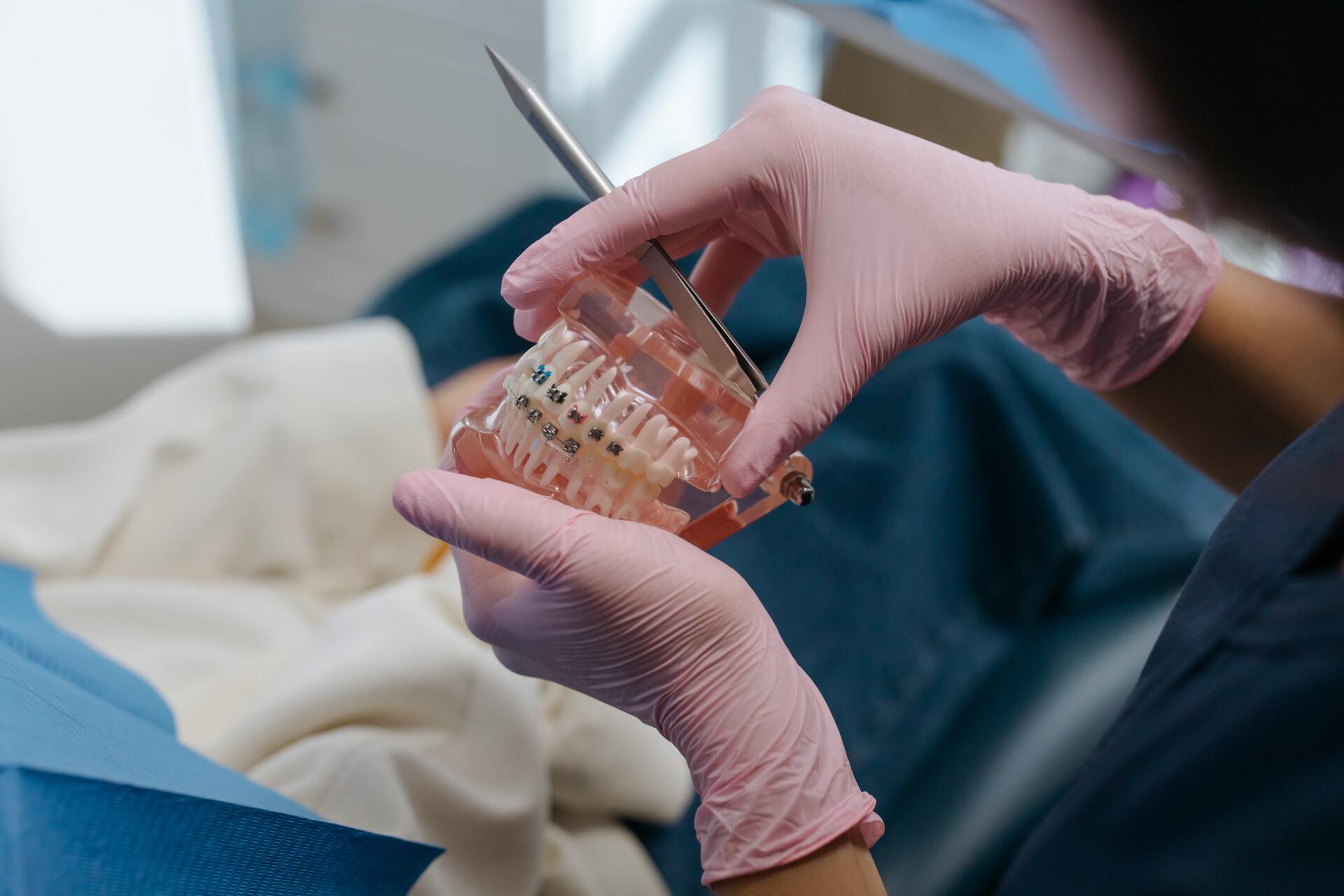
Dental Veneers are getting more attention in recent years thanks to their quick-fix solution to crooked or misaligned teeth. However, veneers don’t actually fix anything–they simply cover your teeth to make them look straight. This would be great if dental malocclusions were merely a cosmetic issue. Unfortunately, misaligned teeth can cause serious problems such as jaw pain, chronic headaches, speech impediments, improper wear and tear on the enamel, and even tooth decay. Read on to find out why braces are a far better solution than veneers when it comes to misaligned teeth. Less Effective As previously mentioned, dental veneers do nothing to correct your bite. Instead, they are porcelain or composite resin covers meant to make your teeth appear a certain way. While we all love a quick fix, covering up the issue isn’t really a fix at all. Instead, why not take the time to do it right and actually correct your malocclusions with braces? If aesthetics are keeping you from conventional braces, you do have more discreet options such as Invisalign and ceramic braces. Expensive While dental veneers don’t actually fix anything, they certainly don’t skimp on the price. Depending on the quality of the material, veneers can cost a staggering $250 to $2,000 per tooth. Worst of all, because veneers are typically considered an elective procedure they are generally not covered by insurance plans. This is normally the case with anything that is purely cosmetic. On the other hand, most dental insurance plans will cover part or all of the cost of braces. Not Permanent After spending all of that money on veneers you would think that they would at least be permanent. Sadly, that is not the case. The less expensive varieties need to be replaced after 4 to 8 years, while the pricey porcelain veneers will last around 10 years. If you are using veneers to cover your misaligned teeth, go for braces instead. You might have to wear your braces for a couple of years, but it is a one-and-done fix. Dental veneers can be a life changer for people who have severely stained or misshapen teeth. However, there are better options for crooked teeth. Instead of covering them up, think long-term and ask your orthodontist about the best plan for a proper fix. At Pearl Orthodontics, we are ready to help you with all of your orthodontic needs. Why wait? Click here to get started with a free consultation today!

Retainers are expensive, and no one wants to pay for theirs more than once in a lifetime. However, keeping this tiny, costly, everyday-use appliance safe can feel like a monumental task. It definitely helps if you know the hazards to watch out for. While there are millions of ways to lose or destroy your retainer, they almost always fall prey to just three: The Crumpled Up Napkin You know the scene. You are sitting there at lunch with a bunch of your friends and you don’t want to ruin everyone’s appetite by displaying your slobbery retainer in full view of everyone at the table, so you wrap it up in a napkin. Once you start talking and eating, your retainer is lightyears away from your thoughts. When lunch is over, you throw out the contents of your tray, not even thinking about the expensive gadget that is now intermingling with cold spaghetti and soggy lettuce in the trash can. If you don’t want to spend all of 4th period dumpster-diving through some pretty gnarly stuff and still probably never see it again, don’t wrap your retainer in a napkin! Always keep it in your case when it isn’t in your mouth. Well-Intentioned But Misguided Cleaning If your retainer has spent the better part of an afternoon absorbing garbage juice (or in any other equally disgusting place), you will want to disinfect it before putting it back into your mouth. However, many retainers have met their demise through misguided cleaning. Never attempt to disinfect your retainer by boiling it in water, running it through your dishwasher, sending it for a spin in your washing machine, or blasting it in the microwave. Simply use warm water and antibacterial dish soap. Fido Dogs love nothing more than a colorful, plastic, slobber-encrusted retainer! If you leave it out they won’t hesitate to snatch it and turn it into their next chew toy. With big dogs, your retainer isn’t even safe in its case. If it’s not in your mouth, keep your retainer in its case and out of reach of both pets and toddlers. Keeping your retainer intact for life might seem like an impossible task, but it has been done! Treat it like the valuable, expensive item that it is and you should be able to keep it safe. Most importantly, be deliberate about what you do with it. If you lose or break your retainer, Pearl Orthodontics is here for you. Even if we didn’t fit your original retainer, we can help you get back on track. Click here to learn more about retainers!

Everyone who gets braces comes home with a long list of foods to steer clear of for the foreseeable future. The list can feel a bit daunting, and likely features some of your favorite foods. You are probably wondering how strict the guidelines are and if, just maybe, you could get away with sneaking some of the forbidden foods here and there. The problem is, these foods really do cause all kinds of issues for braces wearers. Crunchy Foods Crunchy foods are notorious for breaking brackets. The hard snap you hear when you crunch on a carrot or tortilla chip comes from the food’s strong rigidity. The last thing you want is for that snappy sound to come from your bracket breaking. Common culprits are tortilla chips, hard cereals, ice, and raw carrots. If you can’t stand the thought of two years without something crunchy, there are some much safer options. Try chips that dissolve easily in your mouth, such as Pringles and Cheeto Puffs. Hard Foods If crunchy foods are bad, really hard foods are even worse. Hard foods take more force to bite down on, and can even snap your central archwires. In fact, every orthodontic appliance is in danger from hard foods. Wondering what the difference is between hard and crunchy foods? Crunchy foods can be snapped easily by the teeth, while hard foods take more effort. Think jolly ranchers, nuts, and crusty bread like baguettes or pizza crusts. Instead of eating hard candies like jolly ranchers, go for chocolate. And you can still eat pizza, just go for a softer crust and cut it into bite-sized pieces. Sticky Foods Sticky foods are truly your braces’ worst nightmare! If a type of food is known for pulling out molars, you can be sure that it will wreak havoc on your braces and all kinds of orthodontic appliances. As you bite down on sticky foods, they conform to your braces, teeth, and anything else you might have in your mouth. When you lift your teeth apart, the sticky food pulls on whatever it is gripping. Examples include Starbursts, Laffy Taffy, and caramels. The bad news is that you really should follow the food guidelines set by your orthodontist. The good news is that you have a world of yummy, safe options. Many foods are ok if they are cut into small pieces. Beyond that, most foods have a delicious substitution to hit whatever craving you get while you have your braces on! Here at Pearl Orthodontics, we have the experienced, compassionate care you need at every stage of your orthodontic treatment. To learn more about how to care for your braces, click here ! You can also learn more about our office and find our contact information.

Sores in your mouth are the worst! They make eating and even talking difficult, and they hurt like crazy. During your orthodontic treatment, there is a high possibility that whatever device you are wearing will rub you wrong and cause canker sores. So what are they and what can you do about them? What Are They? Canker sores are actually ulcers that form inside your mouth. They may start small, but they can grow to a massive inch-long diameter. They are white in the center with red, inflamed tissue surrounding them. The scientific name for canker sores is aphthous stomatitis, and they can be mild or severe. It is rare for canker sores to form on the hard palate–preferring instead the soft tissue of the inner cheek, gums, and inside of the lip. Generally, canker sores heal within 7-10 days. There is no cure, but certain remedies can reduce pain and shorten the time it takes to heal. Contrary to popular belief, canker sores are not contagious. How Are They Formed? Canker sores have a variety of causes, such as allergies, certain foods and food additives, and stress. For orthodontic patients, the most likely cause is a new area of rubbing from braces or other orthodontic appliances. Acidic foods such as oranges, tomatoes, and pineapple can exacerbate them. The trauma caused to the inside of your mouth from a protruding wire, for example, decreases the mucosal barrier in that location, making it easier for canker sores to form. Can They Be Treated? Unfortunately, there is no cure for canker sores. However, you can treat the symptoms and decrease healing time. Over-the-counter antiseptic rinses such as peroxyl can speed recovery time by preventing a secondary infection. Topical analgesics such as benzocaine can be used to reduce pain. There are also several home remedies that you can try, such as using a saltwater or baking soda and water rinse several times a day. Until your canker sore heals, you should avoid spicy or acidic foods, which can exacerbate the problem and increase your pain. Canker sores are a common complaint for orthodontic patients. While these ulcerative sores are painful, the good news is that they will heal on their own in a week or so. If your sores aren’t healing after 10 days, or if they become unbearable, contact our office to discuss further treatment options. Here at Pearl Orthodontics, we want your treatment to be as comfortable as possible. If you have questions or concerns, we are here for you. Click here for our contact info and to learn more about our dedicated, experienced team!

Braces and retainers are more comfortable and effective than ever, and yet, you are still bound to run into a few orthodontic emergencies in the course of your treatment. It is hard to know what to do about them. Do you need to be seen in the office right away, or can it wait? Can you fix the problem yourself, or will it go away with time? Broken Brackets, Pokey Wires, and a Slipped Wire While your brackets and wires are fairly durable, they can cause you problems from time to time. When a bracket breaks, you can use wax to hold it in place if it is bothering you. If it falls out completely, no worries! Your orthodontist will replace it at your next visit. Be assured that your braces are still working just fine! Next, pokey wires can cause painful sores in your mouth. You can use wax to protect your gums or have a parent carefully trim the excess wire with a pair of disinfected fingernail scissors. Finally, when a wire slips out of place, you can try to fit it back into the molar tube. If that doesn’t work, call the office to get it fixed as soon as possible. Sores and Ulcers Rubbing wires can cause painful ulcers and sores. These sores can make eating and brushing excruciating. Luckily, they do heal quickly. The first step is to take care of any long wires that might be causing the sore. Next, rinse your mouth a couple of times every day with a warm salt water rinse. You can also take over-the-counter pain medications to help with the pain. Broken Retainer Unfortunately, there is no quick fix for a broken retainer. If your retainer breaks, stop wearing it and call the office immediately. You will need your retainer to be replaced quickly to keep your teeth from shifting. It is important not to wear it, because a broken retainer could apply pressure to the wrong teeth, causing them to shift incorrectly. Luckily, most orthodontic emergencies aren’t true emergencies. Many of them can be handled at home, and those that can’t can usually wait until the office can fit you in. So take a deep breath and know that everything’s going to be ok! If you have any questions or concerns about your orthodontic treatment, don’t leave them unanswered. You deserve peace of mind when it comes to your treatment. Click here to learn more and to find out how to contact us!

Some teenagers love the thought of getting braces, while others aren’t too keen on the idea: Will it be painful? Will my smile look ugly in all of my pictures on social media? Will my friends make fun of me for looking childish? Will I still be able to play football? It’s normal to have worries before getting braces. You may even be tempted to wait for adulthood. Nevertheless, this brief introductory guide to braces should help ease your worries and answer some of your questions so that you can look forward to your new smile! Braces and Sports Many teenagers’ lives revolve around playing sports. But can you play sports with braces, particularly high-contact ones? Absolutely! All that is necessary is that you take special precautions while playing your sports, particularly if there is an increased risk of injury. Talk to your orthodontist about getting an orthodontic mouth guard to protect both your mouth and braces. And always bring some orthodontic wax to practice in case you get a loosened wire or broken bracket. Minimizing the Pain Most people feel a bit of discomfort after first getting their braces, as well as after getting their braces readjusted. While this discomfort is normal (and a sign that your braces are doing their job), you don’t have to live with the pain. Responsibly taking pain medication, applying a cold compress, and gently massaging the gums are all ways that you can ease any discomfort you might be feeling. Applying wax will help if your brackets give you cuts or sores. Picture Perfect If you are a teen who is particularly concerned with the aesthetic of braces, know that you have options. If you have metal brackets, pick the color white to help the braces blend into your teeth better. Another option is ceramic braces which are less-visible than traditional metal braces. Or, you can always consider Invisalign. Invisalign is a clear, removable alternative to metal braces that works for most orthodontic cases. That way, nobody will even know you are wearing them! The last important thing to remember as a teen with braces is that you won’t have to wear braces forever. Yes, they can sometimes be a little bothersome, but it will all be worth it in the end. Once your braces are removed and you see your newly improved smile in the mirror, you will hardly remember any of the inconveniences! At Pearl Orthodontics, we provide orthodontic solutions for all ages and stages! Click here to set up an appointment with our expert team today!

Keeping your teeth clean with braces is a slightly more intensive process compared to what you are probably already accustomed to. This is because, with all the brackets and wiring on your teeth, there are more areas for food to get stuck and plaque to accumulate. In order to keep your teeth healthy and clean while wearing braces, here are the three steps you must follow and how often you need to complete them per day. Step 1: Brush While this is a given, brushing with braces is slightly different than brushing without braces. First, set a timer for three minutes. Then, take your soft toothbrush and begin brushing each area of your teeth using a circular motion. Make sure that you focus your attention on the areas above and below your braces. Use an angular grip to gently slide the bristles between each bracket and underneath each wire. You should brush after every meal—including snacks. Step 2: Floss Next, it is time to floss your teeth. This can be a frustrating endeavor for first-time braces-wearers. If you are struggling to get the thread between your teeth, ask your orthodontist for some floss threaders. These nifty little tools will allow you to get the floss in the hard-to-reach areas above or below your wires. Or, if this method is still difficult for you, invest in a water flosser. Either way, make sure you are flossing once a day. Step 3: Mouthwash Finally, don’t forget your mouthwash! Mouthwash is what helps clean up any remaining areas that your toothbrush and floss couldn’t reach. Furthermore, it works to prevent cavities and tartar. Pour a couple of teaspoons of mouthwash into a cup and then swish it around in your mouth for about half a minute. Then, spit and rinse. Give your teeth and braces a final quick check to make sure that no stubborn food particles remain. You should use mouthwash once a day. If the intensity of this routine feels overwhelming at first, don’t worry. Once it becomes a habit, you won’t even think twice about it! Plus, spending a couple of extra minutes a day taking great care of your teeth and braces will guarantee that you’ll have a beautiful smile once those braces are finally removed. Putting in the effort now will save you a lot of trouble in the future. Ready for the smile you deserve? Click here to meet the expert team at Pearl Orthodontics and sign up for a consultation today!



